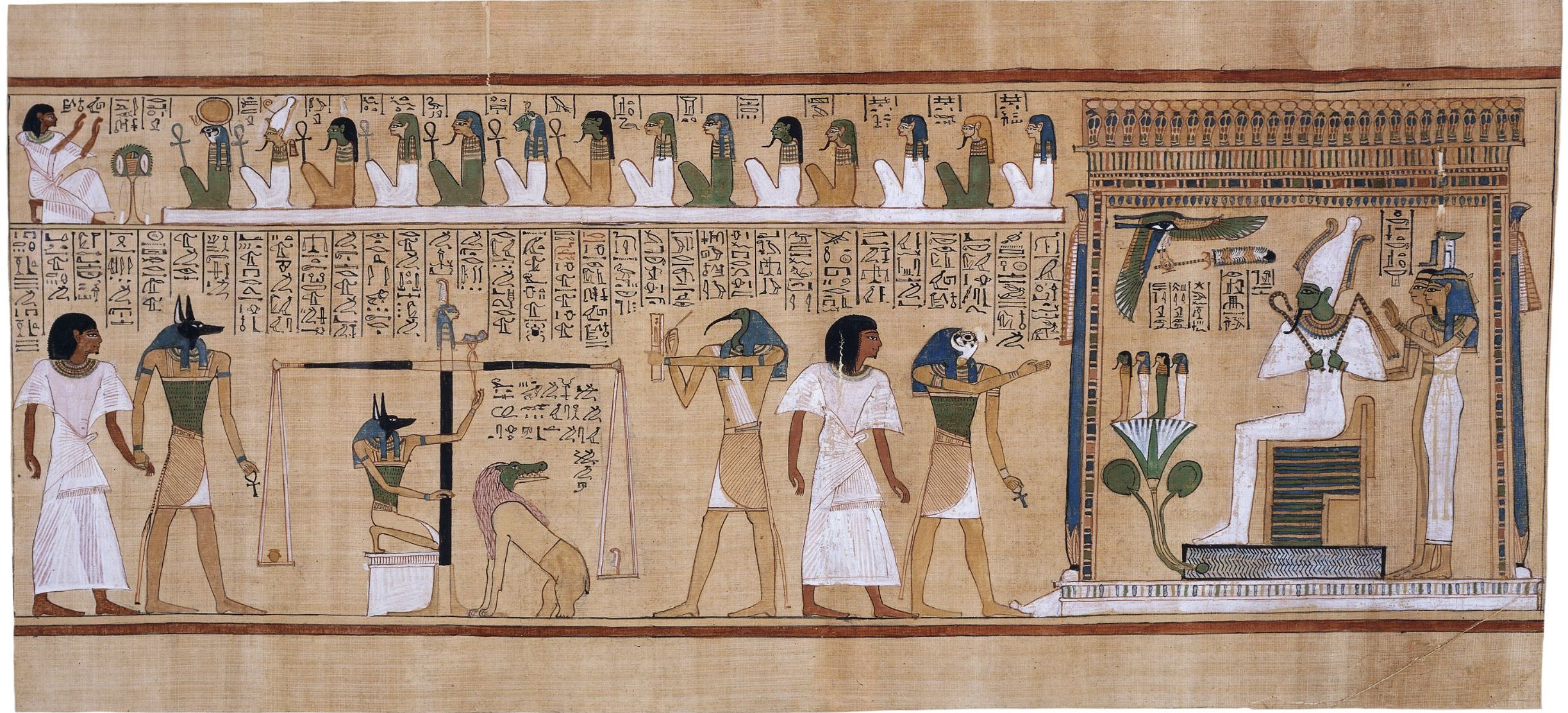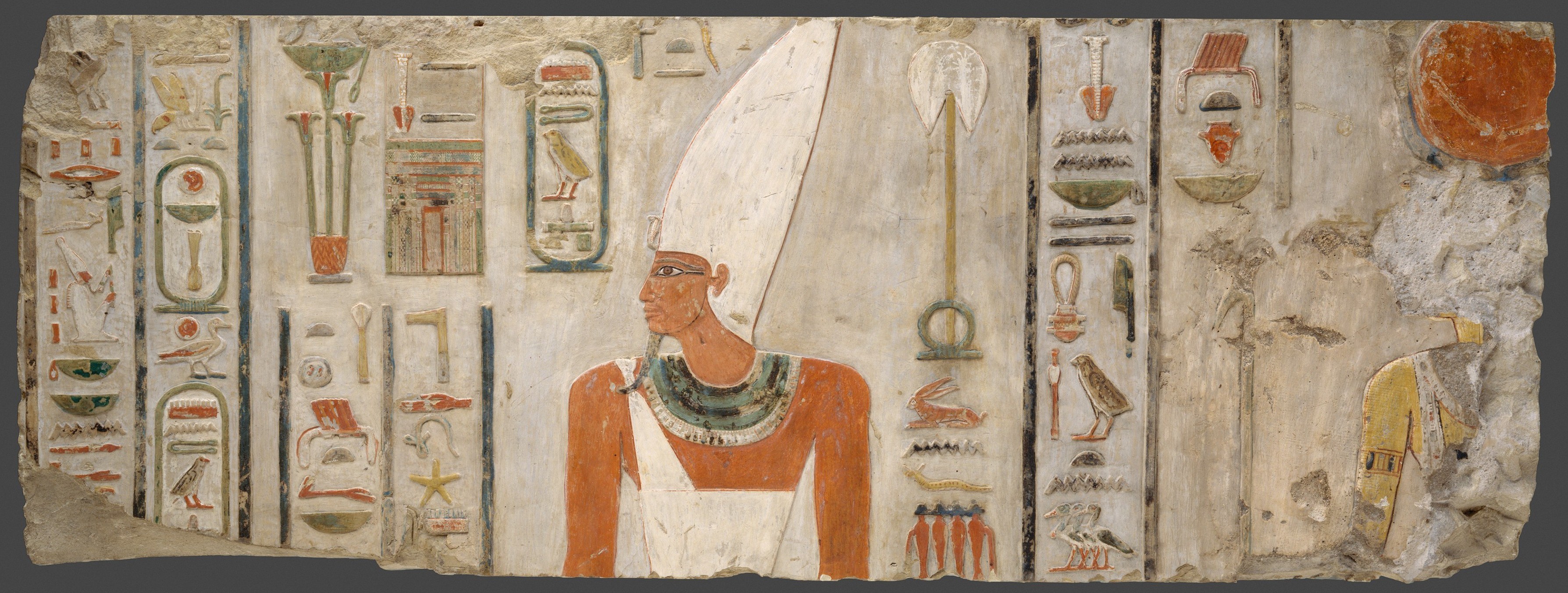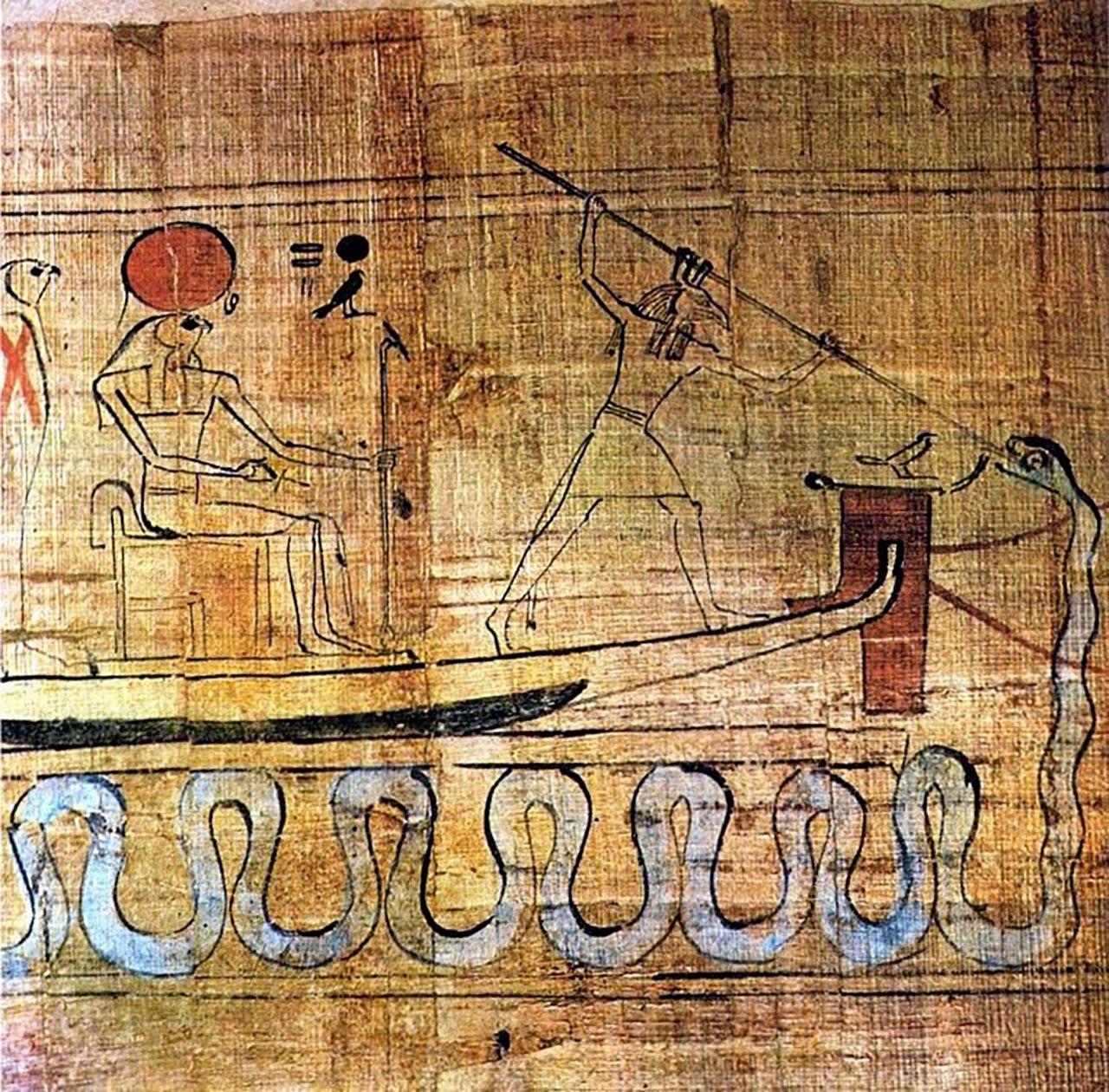|
Isfet (Egyptian Mythology)
Isfet or Asfet (meaning " injustice", " chaos", or "violence"; as a verb, “to do evil”) is an ancient Egyptian term from Egyptian mythology used in philosophy, which was built on a religious, social and politically affected dualism. Isfet was the counter to Maat, which was order. Isfet did not have a physical form. Rather, it was believed that Isfet was personified in the form of Apep. Isfet was important in Egyptian culture as Isfet showed that there is balance in the world. Principles and ideology ''Isfet'' was thought to be the counterpart of the term '' Ma'at'' (meaning "order" or "harmony"). According to ancient Egyptian beliefs, Isfet and Ma'at built a complementary and also paradoxical dualism: one could not exist without its counterpart. Isfet and Ma'at balanced each other. Ma'at was to overcome isfet, 'that which is difficult', 'evil', 'disharmonious', and 'troublesome'. Isfet was to be overcome by good, which would replace disunity with unity and disorder wi ... [...More Info...] [...Related Items...] OR: [Wikipedia] [Google] [Baidu] |
Adolf Erman
Johann Peter Adolf Erman (; 31 October 185426 June 1937) was a German Egyptologist and lexicographer. Education Born in Berlin, he was the son of the physicist Georg Adolf Erman and grandson of the physicist Paul Erman and the astronomer Friedrich Wilhelm Bessel. Educated at Leipzig and Berlin, he became associate professor of Egyptology at the University of Berlin in 1883 and full professor in 1892. In 1885 he was appointed director of the Egyptian department at the royal museum. In 1934 he was excluded from the faculty of the university because he was, according to the Nazi ideology, one quarter Jewish. As his family had converted to Protestantism in 1902, he and his family were not persecuted by the Nazi Party, but they all lost their positions. Career Erman and his school at Berlin had the difficult task of recovering the grammar of the Egyptian language and spent thirty years of special study on it. The greater part of Egyptian texts after the Middle Kingdom having been ... [...More Info...] [...Related Items...] OR: [Wikipedia] [Google] [Baidu] |
Dualistic Cosmology
Dualism or dualistic cosmology is the moral or belief that two fundamental concepts exist, which often oppose each other. It is an umbrella term that covers a diversity of views from various religions, including both traditional religions and scriptural religions. #Moral dualism, Moral dualism is the belief of the great complement of, or conflict between, the benevolent and the malevolent. It simply implies that there are two moral opposites at work, independent of any interpretation of what might be "moral" and independent of how these may be represented. Moral opposites might, for example, exist in a worldview that has one god, more than one god, or none. By contrast, duotheism, bitheism or ditheism implies (at least) two gods. While bitheism implies harmony, ditheism implies rivalry and opposition, such as between good and evil, or light and dark, or summer and winter. For example, a ditheistic system could be one in which one god is a creator and the other a destroyer. In theol ... [...More Info...] [...Related Items...] OR: [Wikipedia] [Google] [Baidu] |
Injustice
Injustice is a quality relating to unfairness or undeserved outcomes. The term may be applied in reference to a particular event or situation, or to a larger status quo. In Western philosophy and jurisprudence, injustice is very commonly—but not always—defined as either the absence or the opposite of justice. The sense of injustice is a universal human feature, though the exact circumstances considered unjust can vary from culture to culture. While even acts of nature can sometimes arouse the sense of injustice, the sense is usually felt in relation to human action such as misuse, abuse, neglect, or malfeasance that is uncorrected or else sanctioned by a legal system or fellow human beings. The sense of injustice can be a powerful motivational condition, causing people to take action not just to defend themselves but also others who they perceive to be unfairly treated. Injustice within legal or societal standards are sometimes referred to as a two-tiered system. Relation ... [...More Info...] [...Related Items...] OR: [Wikipedia] [Google] [Baidu] |
Umbilical Cord
In Placentalia, placental mammals, the umbilical cord (also called the navel string, birth cord or ''funiculus umbilicalis'') is a conduit between the developing embryo or fetus and the placenta. During prenatal development, the umbilical cord is physiologically and genetically part of the fetus and (in humans) normally contains two arteries (the umbilical arteries) and one vein (the umbilical vein), buried within Wharton's jelly. The umbilical vein supplies the fetus with oxygenated, nutrient-rich blood from the placenta. Conversely, the fetal heart pumps low-oxygen, nutrient-depleted blood through the umbilical arteries back to the placenta. Structure and development The umbilical cord develops from and contains remnants of the yolk sac and allantois. It forms by the fifth week of human embryogenesis, development, replacing the yolk sac as the source of nutrients for the embryo. The cord is not directly connected to the mother's circulatory system, but instead joins the pla ... [...More Info...] [...Related Items...] OR: [Wikipedia] [Google] [Baidu] |
Duat
The Duat or Tuat (Ancient Egyptian: Hieroglyph: 𓇽 romanized: dwꜣt) is a concept in ancient Egyptian mythology involving death. It is most often seen as a realm where people go after they die. Due to linguistic shifts within Ancient Egypt, the ''Duat'' has also been called Te () and Amenthes (). What is known of the ''Duat'' derives principally from funerary texts such as the '' Book of Gates'', the ''Book of Caverns'', the '' Coffin Texts'', the '' Amduat'', and the ''Book of the Dead,'' among many other sources. It is generally known best as a dark subterranean realm that not only houses the deceased, but a variety of deities. Common deities depicted in these texts are Osiris, Anubis, Thoth, Horus, and Maat in various forms. While all of these documents involve the ''Duat'', each of them fulfilled a different purpose and depict the ''Duat'' in a variety of unique ways. Overview This realm is most often depicted as a setting for a variety of rituals and mythological e ... [...More Info...] [...Related Items...] OR: [Wikipedia] [Google] [Baidu] |
Coffin Texts
The Coffin Texts are a collection of ancient Egyptian funerary spells written on coffins beginning in the First Intermediate Period. They are partially derived from the earlier Pyramid Texts, reserved for royal use only, but contain substantial new material related to everyday desires, indicating a new target audience of common people. Coffin texts are dated back to 2100 BCE. Ordinary Egyptians who could afford a coffin had access to these funerary spells and the pharaoh no longer had exclusive rights to an afterlife. As the modern name of this collection of some 1,185 spells implies, they were mostly inscribed on Middle Kingdom coffins. They were also sometimes written on tomb walls, stelae, canopic chests, papyri and mummy masks. Due to the limited writing surfaces of some of these objects, the spells were often abbreviated, giving rise to long and short versions, some of which were later copied in the Book of the Dead. Content In contrast to the Pyramid Texts which focus ... [...More Info...] [...Related Items...] OR: [Wikipedia] [Google] [Baidu] |
Middle Kingdom Of Egypt
The Middle Kingdom of Egypt (also known as The Period of Reunification) is the period in the history of ancient Egypt following a period of political division known as the First Intermediate Period of Egypt, First Intermediate Period. The Middle Kingdom lasted from approximately 2040 to 1782 BC, stretching from the reunification of Egypt under the reign of Mentuhotep II in the Eleventh Dynasty of Egypt, Eleventh Dynasty to the end of the Twelfth Dynasty of Egypt, Twelfth Dynasty. The kings of the Eleventh Dynasty ruled from Thebes, Egypt, Thebes and the kings of the Twelfth Dynasty ruled from Lisht, el-Lisht. The Periodization of ancient Egypt, concept of the Middle Kingdom as one of three golden ages was coined in 1845 by German Egyptologist Christian Charles Josias von Bunsen, Baron von Bunsen, and its definition evolved significantly throughout the 19th and 20th centuries. Some scholars also include the Thirteenth Dynasty of Egypt wholly into this period, in which case the Mi ... [...More Info...] [...Related Items...] OR: [Wikipedia] [Google] [Baidu] |
Pharaoh
Pharaoh (, ; Egyptian language, Egyptian: ''wikt:pr ꜥꜣ, pr ꜥꜣ''; Meroitic language, Meroitic: 𐦲𐦤𐦧, ; Biblical Hebrew: ''Parʿō'') was the title of the monarch of ancient Egypt from the First Dynasty of Egypt, First Dynasty () until the Roman Egypt, annexation of Egypt by the Roman Republic in 30 BCE. However, the equivalent Egyptian language, Egyptian word for "king" was the term used most frequently by the ancient Egyptians for their monarchs, regardless of gender, through the middle of the Eighteenth Dynasty during the New Kingdom of Egypt, New Kingdom. The earliest confirmed instances of "pharaoh" used contemporaneously for a ruler were a letter to Akhenaten (reigned –1336 BCE) or an inscription possibly referring to Thutmose III (–1425 BCE). In the early dynasties, ancient Egyptian kings had as many as ancient Egyptian royal titulary, three titles: the Horus name, Horus, the prenomen (Ancient Egypt), Sedge and Bee (wikt:nswt-bjtj, ''nswt-bjtj''), and ... [...More Info...] [...Related Items...] OR: [Wikipedia] [Google] [Baidu] |
Apep
Apophis (; ), also known as Apep () or Aphoph (, ) Erman, Adolf, and Hermann Grapow, eds. 1926–1953. ''Wörterbuch der aegyptischen Sprache im Auftrage der deutschen Akademien''. 6 vols. Leipzig: J. C. Hinrichs'schen Buchhandlungen. (Reprinted Berlin: Akademie-Verlag GmbH, 1971). is the ancient Egyptian deity who embodied darkness and disorder, and was thus the opponent of light and Maat (order/truth). Ra was the bringer of light and hence the biggest opposer of Apophis. Features Because Ra was the solar deity, bringer of light, and thus the upholder of Maat, Apophis was viewed as the greatest enemy of Ra, and thus was given the title ''Enemy of Ra'', and also "the Lord of Chaos". "The Lord of Chaos" was seen as a giant snake or serpent leading to such titles as ''Serpent from the Nile'' and ''Evil Dragon''. Some elaborations said that he stretched 16 yards in length and had a head made of flint. Presented on a Naqada I (c. 4000–3550 BCE) C-ware bowl (now ... [...More Info...] [...Related Items...] OR: [Wikipedia] [Google] [Baidu] |
Maat
Maat or Maʽat ( Egyptian: ''mꜣꜥt'' /ˈmuʀʕat/, Coptic: ⲙⲉⲓ) comprised the ancient Egyptian concepts of truth, balance, order, harmony, law, morality, and justice. Maat was also the goddess who personified these concepts, and regulated the stars, seasons, and the actions of mortals and the deities who had brought order from chaos at the moment of creation. Her ideological opposite was Isfet (Egyptian '' jzft''), meaning injustice, chaos, violence or to do evil. Pronunciation Cuneiform texts indicate that the word ''m3ˤt'' was pronounced /múʔʕa/ during the New Kingdom of Egypt, having lost the feminine ending ''t''. Vowel assimilation of ''u'' to ''e'' later produced the Coptic word "truth, justice". History The earliest surviving records indicating that Maat is the norm for nature and society, in this world and the next, were recorded during the Old Kingdom of Egypt, the earliest substantial surviving examples being found in the Pyramid Texts of Unas ( and ... [...More Info...] [...Related Items...] OR: [Wikipedia] [Google] [Baidu] |
Politics
Politics () is the set of activities that are associated with decision-making, making decisions in social group, groups, or other forms of power (social and political), power relations among individuals, such as the distribution of Social status, status or resources. The branch of social science that studies politics and government is referred to as political science. Politics may be used positively in the context of a "political solution" which is compromising and non-violent, or descriptively as "the art or science of government", but the word often also carries a negative connotation.. The concept has been defined in various ways, and different approaches have fundamentally differing views on whether it should be used extensively or in a limited way, empirically or normatively, and on whether conflict or co-operation is more essential to it. A variety of methods are deployed in politics, which include promoting one's own political views among people, negotiation with other ... [...More Info...] [...Related Items...] OR: [Wikipedia] [Google] [Baidu] |
Hermann Grapow
Hermann Grapow (1 September 1885 in Rostock – 24 August 1967 in Berlin) was a German Egyptologist and professor who published together with Adolf Erman the '' Dictionary of the Egyptian Language''. He studied Egyptology at Humboldt University of Berlin under Adolf Erman. He later taught and became a professor of Egyptology at Humboldt University. Grapow joined the Nazi Party in 1937. After World War II, Grapow continued to work towards the completion of the '' Dictionary of the Egyptian Language''. After its publication, he concentrated on studying ancient Egyptian texts that dealt with medicine. In 1947, together with Richard Hartmann and Diedrich Westermann, he founded the Institute for Oriental Research at the Berlin Academy and was appointed its director in 1956 as the successor to Richard Hartmann. Works *Wörterbuch der ägyptischen Sprache The ''Wörterbuch der ägyptischen Sprache'' (''Dictionary of the Egyptian Language''), abbreviated ''Wb'' in bibliographic r ... [...More Info...] [...Related Items...] OR: [Wikipedia] [Google] [Baidu] |








